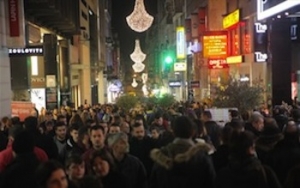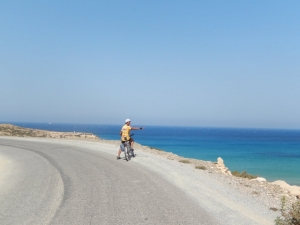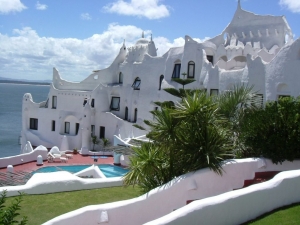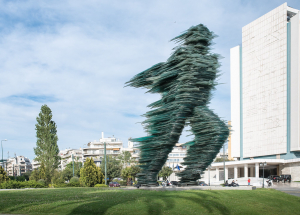English Tradition: Open presents before lunch
Greek Tradition: Open presents whenever curiosity gets the better of you, or just don't give them until New Year
English Tradition: Pork, pork, and more pork - glazed gammon, pork stuffing, bacon on the turkey
Greek Tradition: Chicken liver stuffing
English Tradition: Avoid an argument by getting drunk so you can pretend you don't remember it
Greek Tradition: Embrace the argument, add bells, whistles, and volume, then pack it away neatly for next year
English Tradition: Board games around an open fire
Greek Tradition: Boredom around a heap of foodstuffs
English Tradition: Pretending to hate Christmas so as to appear cool
Greek Tradition: Actually hating Christmas but pretending to enjoy it "for the children". Even when they're in their forties
Enjoy the holidays, everyone!
BUSINESS CENTRE
XpatAthens
Unlocking Ancient Wisdom: 5 Podcasts Every Greek History Lover Should Listen To
White Nights
Saturday night’s White Night (Leuki Nuxta) was a social/cultural experiment in the city. Stores in the centre (Ermou St. and surrounding areas) stayed open until 11:00 pm. There were performers and musicians, there were balloons, and there were people everywhere. Crowds and crowds of people…
It was fantastic! The feeling in the air was, quite simply, happy. It felt like Christmas, it looked like Christmas, it was the feeling of years gone by, when ‘crisis’ wasn’t the word of the day…
And let’s be clear, it wasn’t all about shopping or spending money (although it seems plenty did!). It was about being out with family and friends, going for a walk, checking out the windows, stopping for a bite to eat. Ok, this tends to happen a lot in Athens, but somehow Saturday night had a special quality about it…
The White Night also served to top-up some of the cash registers of the local businesses, just in time for Christmas. People are longing for crisis to be on the way out, and perhaps even the appearance of shopping at Christmas convinces us – for a brief moment - that this is true.
Judging by the subsequent news reports, the commentaries and the comments of people who were there, the White Night was a huge success. And not for the shops alone. People really enjoyed the undeniable electricity in the air.
The experience of that event has also apparently re-ignited the debate about Sunday shopping. It seems obvious now that the majority of Athenians actually enjoy being out and about and browsing the shops on Sundays, in between coffee stops (was that ever in question?!). Maybe the city will figure out rules for Sunday wages, and this thing can be settled for good.
Regardless, the ‘Leuki Nuxta ‘was really enjoyable. Not because I bought something (I didn’t), but more because of the great vibe and feeling in the crowd. It was a happy night in Athens!
Maybe the City of Athens will schedule something similar, say in June…?
With my very best wishes to all for a better and brighter 2014!
Until next week,
Jack
In this weekly space, keep up with ‘Jack’ as he navigates daily life in Athens… Anecdotes, stories, hits & misses, the good, the bad and, well, the rest…
Cycling On The Island Of Gavdos
Where is the most southern chunk of real estate in all Europe? Not Rhodes or Malta or Crete, and certainly not Sicily. To stand on the farthest south land in Europe you must make your way to the island of Gavdos, 170 nautical miles from Africa to the north and 22 nautical miles south of Crete’s feistiest region, Sfakia. “Oh my, it’s hot.” Those were my first words when I got off the boat.
Admittedly, we landed at one in the afternoon, but still, I had just spent several days cycling from morning to dusk in Crete, so even though I was accustomed to a mid-day sun, Gavdos was of another order.
The island is only ten kilometers long and five kilometers wide which makes it bikeable in its entirety in less than a day. The heat and hills probably account for why I didn’t see a single biker during my brief three-day sojourn. Many people walk where they need to go on the well maintained network of paths.
As of September 2014, Gavdos has no hotels, no banks, no ATMs, no post office, no nightclubs, no full time resident doctors. There is a heliport. There is one policeman for the 100 or so residents. I heard his car siren blare when he picked up his daughter from school. In the 1930s Communist political prisoners were exiled to Gavdos.
I stayed at Sarakinika, the beautiful beach settlement (it can’t possibly qualify as a village) where visitors can rent a smattering of rooms and eat in about a half dozen tavernas, some with wi-fi. Most folks like myself camped in tents in the coastal dunes amidst the pines trees and Juniperus shrubs less than a minute’s walk to the sea. I bathed in a rigged up shower on the beach with no curtains but no matter because nudity doesn’t raise eyebrows. My second shot at bathing was a bust because there was no water in Sarakinika which I’m told happens regularly.
As you may have guessed, many of the residents are hippies in retreat. I met Vasilis whose tall frame and long narrow beard evoked what I imagine Pythagoras to have looked like. Vasilis has lived on Gavdos in a tent for fifteen months. I guess he has had a full social calendar because he hasn’t even made it to Trypiti yet, which was the highlight of my visit. I met Antonio from Portugal who epitomized the permanent nomad with his tattoo sleeve and plugs in both ears the size of a one euro coin. His purpose in life seemed to be moving from one outdoor summer music festival to the next.

I wanted to sit on The Throne in Trypiti. This beach is the most southern point on Gavdos island. Where the gravel road stops is a path that takes thirty minutes walk downhill to reach Trypiti. At the beach’s most southern tip is a giant chair that faces north towards Europe. The local Russians built the chair and made the path. Their small community began with a nuclear physicist fleeing Chernobyl. They are scientifically attuned to ecological ways to live and they trade their skills for food and other needs. The locals appreciate them and their presence adds to the mystique and allure of Gavdos.
You’ve really got to have a low footprint to visit Gavdos. This is not a place for those expecting mints on their pillow, a pile of ice cubes for your ouzo or to buy a new pair of sunglasses. Gavdos is raw. It is a place where the nymph Kalypso is said to have imprisoned the shipwrecked Odysseus holding him as her lover. I suspect Gavdos has had its share of modern-day Kalypso and Odysseus wannabes.
By Colleen McGuire
Managing Director of cyclegreece.gr
Casapueblo - The Santorini Of Latin America
Located on a high rocky point jutting over the sparkling water in Punta Ballena, Uruguay, sits the Casapueblo, a magical sculptured hotel/museum that is often mentioned as the Greek island of Uruguay, or, the Santorini of Latin America.
It is the structure’s Cycladic-inspired architecture, combined with Punta Ballena’s amazing sunset view that makes it look like a small village on the island of Santorini in Greece.
The structure that is a short 15-minute drive from Punta del Este, was built by the famous Uruguayan artist Carlos Páez Vilaró. Today, it is a museum, art gallery, and hotel that welcomes thousands of visitors every year.
This complex looks like nothing else in South America. As you explore the winding cave-like corridors containing artifacts and unusual lighting, it gives you a mysterious feeling — and getting lost here is an entertaining experience. There are no room numbers on doors, since the hand-painted tiles on your key match your door tiles — each room is different.
To read more, please visit greekreporter.com
By Anastasios Papapostolou
English vs Greek Christmas Traditions
English Tradition: Complain about going to see the parents
Greek Tradition: Of course we'll be with the parents. But, what's the big deal, we see them every week anyway
English Tradition: Arrive hungover, eat until upright, and then pickle oneself horizontal again.
Greek Tradition: Arrive hungry, pick at everything while it's cooking, complain you're too full to eat, eat anyway, and then fall asleep in front of the telly
English Tradition: Watch the Queen's speech
Greek Tradition: Complain about the pointlessness of the monarchy
All The More Say "I Do" In Greece
The Athenian - Authentic Greek Souvlaki In London
Sculpture Culture: Urban Statues In Athens For Your Instagram


Photo Credit: Thomas Gravanis
The eight-meter-high figure of a runner formed by staggered plates of green glass is as much a feat of engineering as aesthetics. It’s by no means the only work of sculptor Costas Varotsos, a Fulbright scholar, but it’s certainly the most visible and best-known. Originally installed in Omonia in 1988, this highly-snappable landmark was moved to its current location in 1994. It’s an apt site as it signals runners on the Athens Classic Marathon that they’re just minutes from the finish line. By using a universal symbol—the human form in perpetual motion—Varotsos makes post-modernist art more relatable to the public, underscoring his belief in art’s dynamic as a vehicle for social change.

Photo Credit: Thomas Gravanis

Photo Credit: Thomas Gravanis

Photo Credit: Thomas Gravanis
Whether you've just arrived in town – or have been here for years – Athens always has new secrets to share!
Traditional Greek Winter Dishes
Greek cuisine is humble and simple, with a focus on fresh, healthy, and tasty ingredients, including vegetables and herbs, and that applies both to light and heartier dishes.
Since it is rather cold outside, here is a small list of traditional Greek winter staple dishes you should definitely try!
Fasolada
@toxwrioudaki
Fasolada is a traditional Greek bean soup – a very easy-to-make vegetarian recipe. This thick soup is traditionally made with white beans cooked with olive oil, onions, carrots, tomatoes, and celery. An all-time classic Greek winter staple, perfect for warming the body!
Meatball Soup - Giouvarlakia
@aikaterineapostolake
Another Greek comfort food, giouvarlakia is the ideal dish to keep you warm. It's a tasty meatball soup finished off with the infamous egg-lemon sauce (avgolemono) and complemented with vegetables of your liking. If you want to experiment a little bit, you can also try out the alternative version with tomato sauce.
Spetsofai 
@agnomarket_meat
Yet another wintertime favorite, Spetsofai is a traditional dish originating from Pelion, the scenic mountain village of Thessaly. Made with country sausages and peppers cooked in a thick tomato sauce, this delicious dish is perfectly paired with feta cheese and a slice of bread to dip in the sauce. Eggplants are used in the original recipe, and in some areas, hot paprika and red hot chili peppers are used instead of ordinary peppers. It's a must-try, regardless of which version you make.
Chicken Soup - Kotosoupa
@olivemagazine_gr
Kotosoupa avgolemono (chicken soup with egg-lemon sauce), another Greek winter classic, is commonly served on cold days. It's very easy to cook; it's just chicken soup with rice and a lot of egg-lemon sauce. Not to mention that it is also used as a remedy to treat the common cold!
New Year, New Resolutions?
Does anyone go out for New Year's Eve anymore? Apparently, plenty do! My New Year's Eve happened at the last minute, with a few messages and rushed phone calls: "Are you doing anything? What should we do? Is it too late? Let's go!" In the end, four friends ventured out for a fun evening. Now, truth be told, I have been known to boycott new year's eve in the past. I feel it is too 'manufactured' and too over-priced. Why would I pay 45 euros for a dinner that I could get the day before for 20?
Nonetheless, fun energy being as contagious as it is, all thoughts of boycott leave my mind the moment we step out.
We headed for Psirri around 9:30pm to find a place for dinner. The streets seemed to be deserted, and I thought, "Crisis has kept people at home." Not true! It seems we were about 30mins too early. Each restaurant we checked was either already full, or booked up solid for the evening - even with ?45-55 price tags for dinner. We eventually found a table at a nice-ish place, with live music and a ?45 price tag.
After midnight struck, and we made our wishes for 2014, we paid our bill and left to our next destination.
For those who have not done New Years Eve in Athens, all the action happens well after midnight. Many places don't even open until 12:30. By this time, the city was positively hopping with people!
We had frantically bought last-minute tickets to a live music show at Gazarte in Gazi. The line-up was Penny & The Swingin Cats with The Great Big Band. The place quickly filled up around 1:00am, and the show was great - big band standards, rock'n'roll, and even some of their original stuff. I really enjoyed them - great vocals, great energy, lots of fun. Look out for their upcoming gigs!
I decided not to make any new year resolutions this year. Since I'm still working on last year's resolutions (not to mention 2012 and some of 2011), I figured I'd give it a rest for 2014. I'm just happy seeing oranges growing on the trees in January! The rest will be a bonus ;)
I hope this year brings smiles and laughter and lots of sunny days to everyone out there! Καλή χρονιά σε όλους!
Until next week,
Jack
In this weekly space, keep up with ‘Jack’ as he navigates daily life in Athens… Anecdotes, stories, hits & misses, the good, the bad and, well, the rest…












